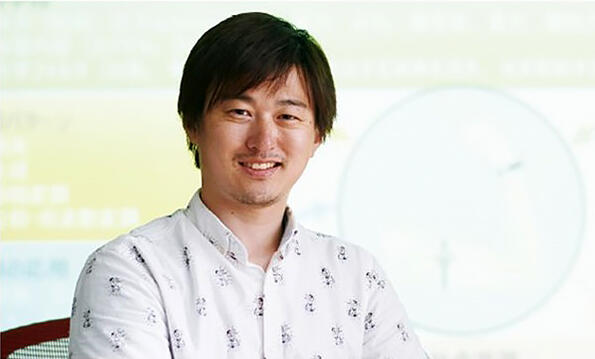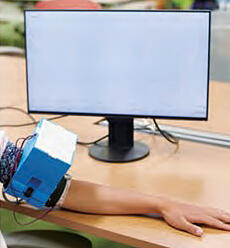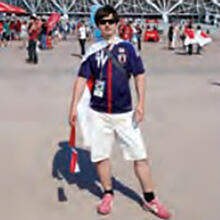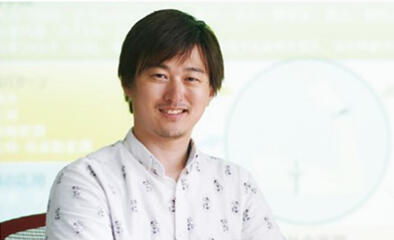
Associate Professor, College of Information Science and Engineering, Ritsumeikan University
Q1. What were you interested in?
A1. From chemistry and physics to information science. I am fascinated with the competitiveness of research cycles.
When I was a child, I liked PE and arts and crafts. In my high school days, my eyes were opened to how interesting chemistry and physics were and I took the path of learning information science at the Department of Electronic, Information and Energy Engineering in my university, after thinking about my future career prospects. The laboratory I belonged to was a powerful organization that published a lot of papers and produced a large number of researchers. Besides the fun of information science, I got hooked on the competitiveness seen in the research cycle, which starts from selecting a forward-thinking theme, followed by publishing papers to an academic society, presentation of the research results if the paper is accepted, and then starting research on another new theme. Before I knew it, I was on track to become a researcher.

Q2. Explain to us in detail what research you engage in.
A2. Finding a breakthrough in transmitting information correctly without being misused, in the infrastructure of a technology-oriented society.
I engage in the research of the "security risks of wearable sensing" at JST PRESTO. Wearable device is a generic term for computers that can be worn like a watch and glasses. By attaching it on your skin, your heart rate, sweating conditions and the movement of muscles can be measured in detail.
Use of wearable sensing technology is growing in the real world. For example, in a new service that records workout data on your wearable device and allows users to accumulate points to lower insurance premiums the following year. However, there are issues such as squeezing your arm wearing a smart watch with your hand can control blood circulation and turn-off or slow down the pulse wave meaning that it can be misused. Another example is, shining a light on the sensor will cause it to send false workout information. I am developing a system that detects such false signals by finding out the weakness of wearable devices in bioinformation sensing.
Besides wearable sensing, it is possible to collect and analyze diversified information from peoples' unconscious behaviors. Interesting results can be obtained from linking data with everyday casual behaviors, for example, the way you reel toilet paper out and the shift of your heart rate when you cheer at a sporting event.
Q3. What type of research would you like to involve yourself in in the future?
A3. To support social infrastructure from backstage: from 'JST PRESTO' to 'CREST.'
In JST PRESTO, I was inspired by taking part in area meetings and having in-depth discussions with other researchers. I also got a lot of chances to collaborate with other researchers of the same field I belonged to. After a sudden consultation, I had a chance to collaborate with two researchers to launch three themes and publish papers on them in cooperation with Assistant Professor Yuki Matsuda (Nara Institute of Science and Technology), who was a second term researcher, and Assistant Professor Hiroki Watanabe (Hokkaido University), a third term researcher. In addition, I increased my connections with external organizations, which gave me a chance to disseminate my research.
Rather than pursuing one strong theme, I am proceeding with my research with the stance that I will try many themes and hope that one of them will show great growth and development. Ultimately, I would like to expand my activities by involving public administrations to spread my results out to society. What I want to do is to create technologies that support various systems that are used by people in their daily lives. I would like to take the initiative and continue to work diligently toward my next goal of conducting research at CREST.


Profile
Born in Osaka. Graduated from Multimedia Engineering Course, Graduate School of Information Science and Technology and received Ph.D. in Information Science and Technology (Computer Science) in 2010 from Osaka University. From 2017, Associate Professor at Ritsumeikan University, after taking posts of assistant professor at Kobe University and visiting research fellow at Albert-Ludwigs-Universität Freiburg, Germany. 2017-2018 ACT-I researcher. From 2019 JST PRESTO researcher.




